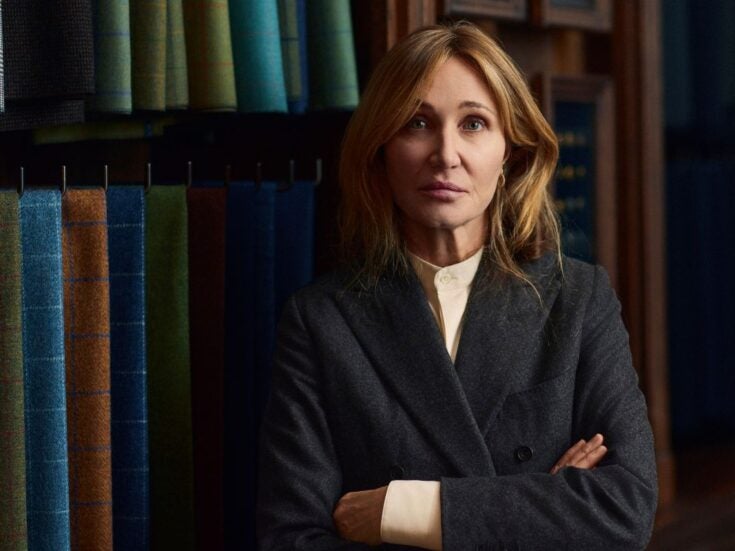LONDON, 4 SEPTEMBER, 2012 – This December, Sotheby’s will offer at auction three Renaissance masterworks: a major drawing by Raffaello Sanzio, called Raphael (1483-1520); and two 15th-century illuminated manuscripts, produced in Flanders for two of the leading patrons of their day, and among the most important examples of their kind ever to come to auction
LONDON, 4 SEPTEMBER, 2012 – This December, Sotheby’s will offer at auction three Renaissance masterworks: a major drawing by Raffaello Sanzio, called Raphael (1483-1520); and two 15th-century illuminated manuscripts, produced in Flanders for two of the leading patrons of their day, and among the most important examples of their kind ever to come to auction.
Created half a millennium ago and within 60 years of each other, the three works, which have a total estimate of £17m-26m, come to sale from the Devonshire Collection, housed at Chatsworth in Derbyshire. They will be offered in Sotheby’s Evening Sale of Old Master Paintings and Drawings in London on 5th December 2012.
Speaking of the sale, the Duke of Devonshire said, “We are very fortunate that the Devonshire Collection has such extraordinary depth in so many areas. The sale of these works which our family has long cared for will now benefit the long-term future of Chatsworth and its collections.”
Executed in black chalk, Raphael’s Head of an Apostle (estimated at £10–15 million) is a highly important drawing within the artist’s oeuvre: a working, ‘auxiliary cartoon’ for a significant figure in the Transfiguration, Raphael’s greatest late work, commissioned by Cardinal Giulio de’ Medici in around 1516 and recently described by scholars as “one of the most important of all Renaissance paintings”.When Raphael died unexpectedly at the age of just 37, his body was laid out in state in his studio, with the Transfiguration hanging at his head. (The painting can today be seen in the Vatican Museum in Rome.)
Just as the Transfiguration was a major milestone in the history of art, anticipating elements of the much later Baroque style, so too the drawings relating to it were unlike anything previously seen in Raphael’s oeuvre or anywhere else.

Cristiana Romalli, Senior Director in the Department of Old Master Drawings at Sotheby’s, commented: “This very moving study is a paramount example of Raphael’s draughtsmanship – and shows exactly why he is revered as very possibly the greatest master of drawing who has ever lived. The sheer beauty of this work is utterly breath-taking – and the way in which it allows us to join Raphael as he created his last great masterpiece is hugely exciting.”
The sale of this drawing is an auction event of enormous significance. In the last 50 years, only two drawings by Raphael of similar importance have appeared on the market, each of which set an all-time record for an Old Master Drawing when they were sold.
Gregory Rubinstein, Worldwide Head of Old Master Drawings at Sotheby’s, said: “It is one of the greatest privileges of my career to be handling the sale of a drawing of such extraordinary importance – and of such incredible power and beauty too. These rare moments, over the centuries, define the history of the drawings market.”
Of Raphael’s late works, it is the Transfiguration for which the largest number of studies survive, partly, no doubt, because this was such an important commission that Raphael must have felt the need to prepare it with an exceptional degree of care and attention. No fewer than 17 drawings for The Transfiguration are known. Nine of these (including the one to be sold) are currently reassembled, alongside other related material, in the acclaimed exhibition on the late works of Raphael in the Prado Museum in Madrid.
For his most important paintings, Raphael used auxiliary cartoons to explore the subtlest details and aspects of the poses and modelling of the figures in his paintings. Having first produced a series of rapidly executed sketches of the whole composition and several more detailed – and still relatively small scale – figure studies, he must then have made a full, actual size cartoon of the whole composition which would then have been used to transfer the design to the wooden panel on which the painting was executed.
Finally, he transferred certain details from the main cartoon to further sheets, and worked up these large-scale studies with enormous attention, perfecting still further the finest nuances of the poses, the lighting and the modelling. The resulting auxiliary cartoons include some of the most supremely magical works on paper that this greatest of Renaissance masters ever produced.
The drawing comes to sale from one of the greatest Old Master Drawings collections in the world. Most of the drawings in the Devonshire Collection were acquired by William Cavendish, 2nd Duke of Devonshire (1672-1729), a brilliant and highly effective collector, who managed with some regularity to beat all the other leading European collectors of his time to the greatest prizes that became available in this field. Raphael’s drawings are particularly well represented in the Devonshire Collection: only two other British collections (the Ashmolean Museum, Oxford, and the British Museum), can boast more drawings by the master than the 14, including two other studies for the same painting, which will remain at Chatsworth following this sale.
Of the two illuminated manuscripts to be sold, Dr. Timothy Bolton, Specialist in Western Manuscripts, said: “These are everyone’s ideal of the perfect medieval manuscripts. They are lavishly illuminated, made for two of the greatest libraries of the late Middle Ages, dated and documented, filled with pictures of knights and jousts and battles and castles, flawlessly preserved, with dazzling pedigrees of royal and ducal provenances, and unseen on the market for 200 years.”
The first of the manuscripts, the Mystere de la Vengeance, estimated at £4-6 million, was illuminated for Philip the Good (1396-1467), Duke of Burgundy, probably the greatest royal art patron and book collector of the late Middle Ages. The manuscript is documented in the ducal accounts for July 1468, detailing the payments to the court artist Loyset Liédet for each of the manuscript’s 20 magnificent large illuminated miniatures (at a price of 18 livres a picture).
The Mystere de la Vengeance is the deluxe 2- volume text of a play in French, which was performed for Philip the Good himself. It opens with a list of characters, and is laid out like a modern film or play script, with stage directions and speaking parts. The breath-taking pictures are by far the finest illustrations of medieval drama in any illuminated manuscript.
The manuscript passed from the library of Philip the Good into those of Charles the Bold (1433-77), Mary of Burgundy (1457-1482) and the Holy Roman Emperor Maximilian of Austria (1495-1519), whose son, Philip the Handsome (1478-1506), also had the play performed. It was acquired by the sixth Duke of Devonshire at the celebrated Roxburghe sale of 1812, when it sold for £493.10s., then the highest price ever paid for any illuminated manuscript.
The second illuminated manuscript is a romance of chivalry – a literary account in French of the fictional and swashbuckling Deeds of Sir Gillion de Trazegnies in the Middle East. It was illuminated in 1464 for Louis de Gruuthuse (1422-92), courtier to Philip the Good and the greatest private bibliophile in the Burgundian Netherlands. It was afterwards in the library of François I, king of France 1515-47. The manuscript is illustrated with 8 large and 44 smaller miniatures. Like the manuscript of the Vengeance, it is in flawless, sparkling condition.
The manuscript, estimated at £3-5 million, tells the tale of Gillion, a quintessentially medieval romance with knights on horseback, jousting, a love triangle and fantastical accounts of the court of the Sultan. On his way back from pilgrimage to the Holy Land, Gillion is taken prisoner by the Sultan at Cairo. Fortunately for him, he is spared from death by the Sultan’s love- struck daughter, who, on receipt of the news that his wife and children at home in Trazegnies have died, he proceeds to marry.
Gillion later learns, however, that his first wife and children are still alive. In order to resolve the sin of bigamy, his two wives enter a convent in Belgium and, on Gillion’s death, his heart is buried between them. The bibliographer and founder of the Roxburghe Club exclaimed in 1817, “The reader sighs to take leave of such a volume.”
Read more on art and collecting from Spear’s
Don’t miss out on the best of Spear’s articles – sign up to the Spear’s weekly newsletter






